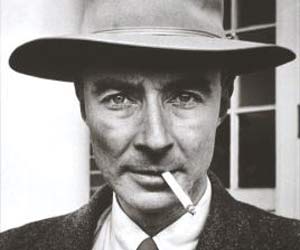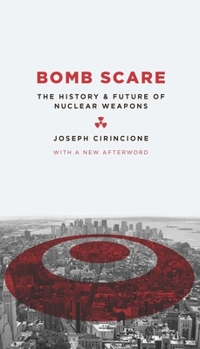Bomb Scare: The History and Future of Nuclear Weapons
Select Format
Select Condition 
Book Overview
Since their inception, nuclear weapons have multiplied at an alarming rate, leaving everyone from policymakers to concerned citizens wondering what it will take to slow, stop, or even reverse their... This description may be from another edition of this product.
Format:Hardcover
Language:English
ISBN:0231135106
ISBN13:9780231135108
Release Date:February 2007
Publisher:Columbia University Press
Length:224 Pages
Weight:0.85 lbs.
Dimensions:0.8" x 5.3" x 9.3"
Customer Reviews
5 ratings
Outstanding!
Published by Thriftbooks.com User , 16 years ago
"Bomb Scare" is full of credible and helpful data, as well as balanced in its assessments. Early on readers learn that it takes about 80 generations of neutrons to fission a kilogram of material - this takes about 0.8 microseconds and creates a temperature of 10 billion Celsius. A gun design plug in an enriched uranium bomb has to travel at at least 1,000 ft./second to initiate a sustained chain reaction. The Hiroshima bomb gun barrel weighed about 1,000 lbs. and was 6 feet long; the bomb itself used 64 kilos of U-235. Today this could be accomplished with 25 kilos and put into a package about the size of a small melon. (Plutonium could not be used in a gun design - its neutrons are too fast.) Implosion-type designs are used for plutonium bombs. About 6 kilos was used for the Trinity test and at Nagasaki. Modern weapons use about 5 kilograms - about the size of a plum. (So much for the debate on whether "suitcase" bombs are feasible.) The first U.S. H-bomb had a yield of 10.4 megatons. The U.S. total stockpile of nuclear and thermonuclear weapons reached around 20,000 by 1960, vs. 1,600 for the Russians. (So much for Kennedy's argument that the U.S. had a "bomb gap.") We recently learned that during the Cuban missile crisis the Russians had already positioned about 100 nuclear weapons in Cuba. There are five main reasons states acquire nuclear weapons: Security, prestige, domestic politics, technology, and economics. Different sides of the same reasons are also why many nations choose not to acquire such weapons. Cirincione sees Russia as the #1 potential source of nuclear weapons/material for terrorists. It has thousands of nuclear weapons at 150-210 sites and hundreds of nuclear materials at about 49 sites. Experts believe that it would be difficult for terrorists to acquire a completed bomb - they are well guarded and utilize complex security locks. On the other hand, experts also believe that terrorists could construct a bomb from enriched material with only 3-4 technically people. Pakistan is seen as a close #2 potential source. USA Today reported in November of 2001 that at least 10 Taliban had contacted Pakistani scientists in the prior two years. Pakistan has enough highly enriched uranium to make 50-100 bombs. There are also about 40 nations with civilian stockpiles for power reactors. While not sufficiently enriched for nuclear weapons, it would be a simple matter to extend the enrichment process to create such. Potential nuclear powder-kegs involve U.S. and Russian weapons being on 15-minute alert, and situations involving Taiwan, or India-Pakistan. Adverse recent events include the U.S. invasion of Iraq (increased terrorist and nervous state motivation to acquire nuclear weapons), our support for increased Indian development of nuclear weapons, U.S. promulgation of new logic for nuclear weapon use ("bunker-busters," use against non-nuclear states), and a slowdown/stop in reduction programs involving Russ
History, security analysis and theory blends in a general text for any student of world politics
Published by Thriftbooks.com User , 16 years ago
BOMB SCARE: THE HISTORY & FUTURE OF NUCLEAR WEAPONS begins with the first atomic discoveries of the 1930s and covers the history of the growth of nuclear weapons through the decades, right up to the current crisis with Iran and the threat of worldwide proliferation. History, security analysis and theory blends in a general text for any student of world politics and military history, particularly at the college level.
USAF Vet Recommends Five Stars
Published by Thriftbooks.com User , 16 years ago
Those of us with a Top Secret "Q" Clearance during the Cold War are intimately familiar with the horrific realities of what a nuclear confrontation would mean for civilization. The author provides a concise, accurate, and up-to-date history of the nuclear threat. He also advances the best thinking related to diminishing the threats posed by nuclear arms in the 21st century, and putting the materials of decommissioned warheads to peaceful uses as fuel for nuclear reactors.
Sleeper Awake!
Published by Thriftbooks.com User , 17 years ago
Perhaps the most significant issue in this century is not AIDS, the energy crisis, the environment or the Middle East but is the issue of universal nuclear disarmament. Joseph Cirincione has given us a clear solution to this problem in his book, BOMB SCARE: THE HISTORY AND FUTURE OF NUCLEAR WEAPONS. The first recorded war between nation states occurred in 2700 BC. From that time to the present man has devised a plethora of clever devices to kill and maim his fellows. Since the fall of the Soviet Union near the end of the last century (1991), the United States has funded the Russian government in the "cleanup" of warheads, bombs and other nuclear components scattered throughout the various nuclear facilities in the former Soviet Republic in an attempt to prevent terrorists and other non-nuclear nations from obtaining the same. Cirincione believes that "with additional funding, this threat reduction program could be accelerated to secure or eliminate the vast majority of nuclear weapons and materials by 2010." The issue, of course, is that the "have-nots" want what the "haves" have: NUCLEAR ENERGY. Here the author proposes that a new system controlled by the International Atomic Energy Agency would provide a supply of nuclear material to countries that need it for civilian use in exchange for an agreement that those same countries not seek to build facilities to create their own "nuclear resources". Cirincione understands that it is impossible to convince the "have-nots" to give up their nuclear weapons ambitions and to adhere to nonproliferation norms while the "haves" assert the importance of these weapons for their own safety and security (read that Pakistan and Iran). As one state goes nuclear, another state is forced to do the same thing ad infinitum: "in short, proliferation begets proliferation." Cirincione whimsically wonders if the obverse is possible. 188 countries are signatories to the Non-Proliferation Treaty that became effective in 1970. The only countries that have not signed are: Israel, Pakistan, and India. North Korea has withdrawn. These are the countries the treaty has unsuccessfully prevented from obtaining nuclear resources. The original signatories, the United States, Russia, Great Britain, France and China all agreed to ultimately dismantle their arsenals under a future agreement: to date that "future accord" has not happened. In fact, advances in this area have continued. Without compliance with this treaty, Cirincione posits the world faces a nuclear disaster. In the end the author asks the reader to think beyond the old paradigms and to dare to explore ways to prevent what certainly, in the world's present state, is a sure slide into nuclear oblivion. This is more than a thoughtful book, it is a book every American should read and take to heart.
Optimistic, I hope he's correct
Published by Thriftbooks.com User , 17 years ago
While the subtitle of this book might have you thinking this is a history of the construction of the bomb, it is really more of a history of the non-use of the bomb and of the various treaties that have effectively stopped the development of nuclear weapons by more states. On the whole this has been a good journey. The time of the Bay of Pigs invasion was probably the most dangerous time in the history of the world. Unknown to Kennedy and his advisors, there were already nuclear weapons in Cuba and on board the submarines sent along with the merchant ships. Since then nations with nuclear programs have cancelled their programs, nuclear arsenals have been reduced, and the threat has gone down. The future part of the book is less certain. Nations like North Korea have announced their intention to build weapons. When the government there collapses, what will happen? For the first time Non Govermental Organizations (NGO's) such as terrorist groups are attempting to acquire weapons. Mr. Cirincione is optimistic that the treaties in force, world opinion, and a stronger UN will prevale. Let us hope he is right.
Bomb Scare: The History and Future of Nuclear Weapons Mentions in Our Blog

Oppenheimer Reading List
Published by Ashly Moore Sheldon • July 27, 2023
Featuring a glittering, star-studded cast, Christopher Nolan's brilliant new film charts the turbulent life of J. Robert Oppenheimer, the theoretical physicist who played a significant role in developing the first atomic bombs. If you enjoyed the movie, here's your chance to learn more about this fascinating chapter from history.




